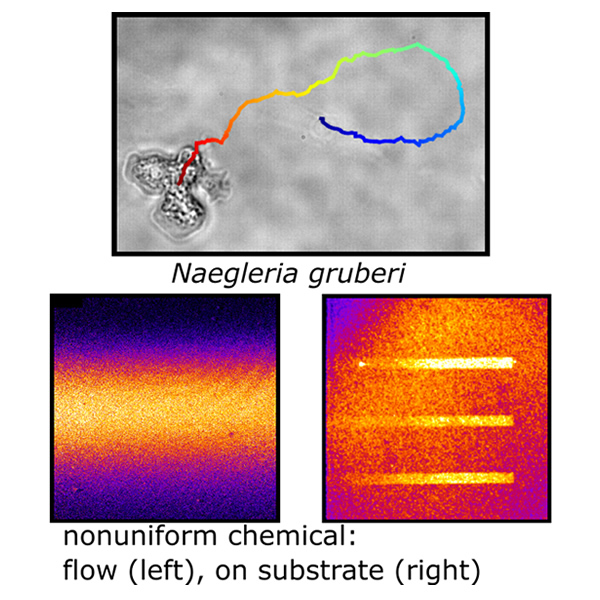Grant-in-Aid for Transformative Research Areas (A)
Publicly Offered Research:2022FY
Simultaneous estimation of chemotactic and haptotactic response of Naegleria gruberi by machine learning
- Principal
investigator - Masahito UwamichiCollege of Arts and Sciences, The University of Tokyo
Single-celled organisms sense chemicals in their surroundings when they move to search for better positions. In this study, we use deep learning to extract the relationship between cell movement and chemical concentration to create a mathematical model of cellular movement under multiple chemical signals.
First, we create a nonuniform pattern of a single chemical substance in solution or on a substrate using fluidic devices or micropatterning techniques and observe the movement of a single-celled organism, Naegleria gruberi, under this environment. Next, we will establish a deep learning method that can estimate the effects of prior cellular states and chemical concentrations on subsequent cellular states from the obtained observation data. Finally, we observe the movement of Naegleria gruberi in an environment with a nonuniform pattern of multiple substances and pass the data through deep learning. This will result in a mathematical expression of the posterior cellular state in terms of the prior cellular state and the concentrations of chemicals. Furthermore, we elucidate the laws of cellular response to chemicals by comparing the obtained mathematical model with the existing mechanistic models.

 Ethological dynamics in diorama environments
Ethological dynamics in diorama environments